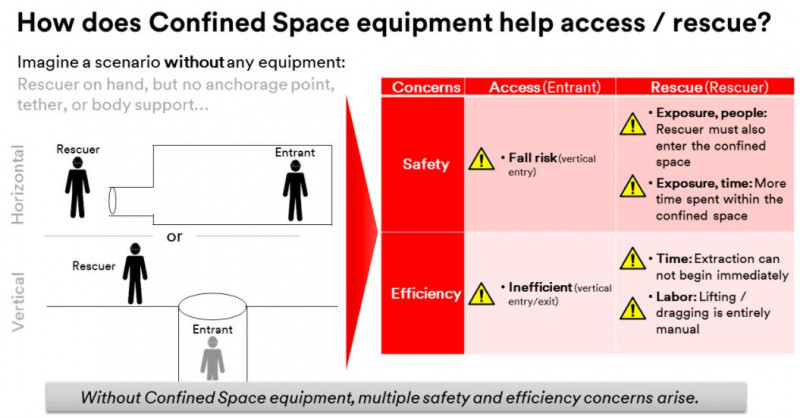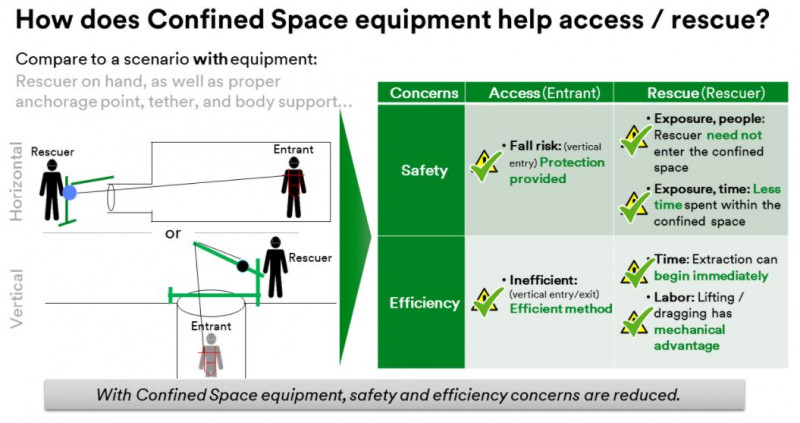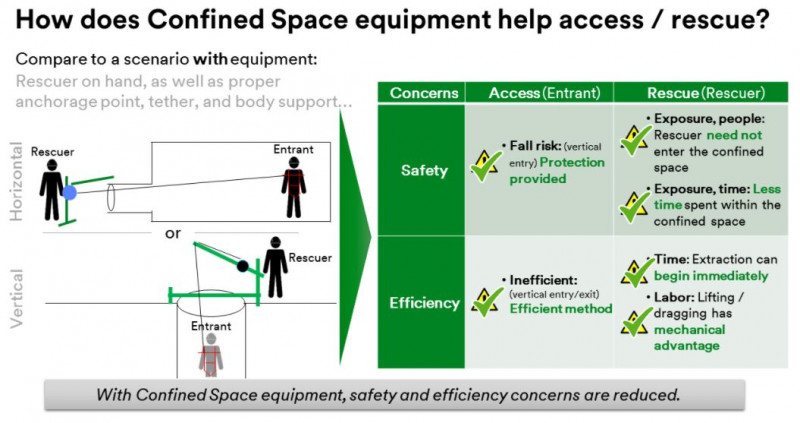-
Hong Kong SAR
Copyright © 2025 Powered by BCI Media Group Pty Ltd
Confirm Submission
Are you sure want to adding all Products to your Library?
Contact Detail

By the time you are accessing the confined space, a hazard assessment has been completed, but if not, one needs to be conducted to ensure all hazards have been identified. This thorough review will help you identify the right equipment to access the confined space properly. It also is essential to have proper training that will allow you to understand and identify the risks associated with this specific kind of work and then mitigate these risks and hazards effectively. Finally, before any work can begin, air quality should be tested to make sure the conditions are suitable for entry.
As you can see, there is a lot of planning and steps that must be conducted before accessing a confined space on your job site. This includes making sure that you have identified a primary point of contact and resource for issues pertaining to confined space entry. Often this may be the HSE management as well as the supervisor. (If you missed the previous post on confined space planning, check it out.) Let’s explore some of the steps to take before accessing any confined space on your job site.
Hazard Assessment
Every single time a confined space is going to be accessed, you need to review the risk assessment for that space and validate that there aren’t new risks or hazards because of the work being done or events happening around the space. This reassessment ensures the workers entering the space will be protected properly based on these current conditions. The conditions often change and, therefore, this assessment should be constantly updated. This may include a variety of issues, such as unsafe levels of gas requiring respiratory protection, the presence of flammable substances, loud noises requiring hearing protection, and control of all energy sources (lock-out/tag-out).
This part of planning should also include a pre-work (or pre-access) briefing. During this part of the preparation, all the work, the time it will take, and emergency protocols that may be needed should be reviewed so everyone is on the same page.
Air Monitoring
Prior to any confined space entry, you are required to carry out air testing when it is known (e.g. from information on a previous hazard assessment or chemicals used in a previous activity in the space) that the atmosphere in the confined space might be contaminated or to any extent unsafe to breathe. Gas detection instruments should be checked to make sure they are working properly per product user instructions.
Most confined space air monitoring is accomplished using a four-gas analyzer. This checks the atmosphere for oxygen concentration and to determine the presence of various hazardous fumes, gases, vapors and particulates. Based on your hazard assessment, there may be a need for gas-specific monitors to determine lower-level concentrations that may be present.
Equipment Needed for Access
Without the proper equipment and training, safety and efficiency may be compromised and rescuing someone may be delayed if a problem does arise.
Think about it this way:

The key people involved in entries into confined spaces are the entrant, attendant, supervisor and rescue teams. All these participants require thorough training on the right equipment to minimize the risk of injury. Rescue plans that outline each step regarding how to work in the space and how to react if a problem occurs must be in place and be well-known by all parties in order to minimize the time required in case the need to rescue, remove or retrieve is needed.
Now think about it this way – this is how you can be prepared if you think it through:


The various types of confined spaces may all have different access points, involving vertical or horizontal entry and these will require different access equipment. Examples include a tripod, davit, pole hoist, side entry system, winch, and SRL retrieval. Having the right equipment in good working order and proper training on how to use these solutions for entrants can help prevent risk and in some instances, prevent the need for anyone else to enter if a rescue does become necessary.
The equipment used for access can be your initial rescue equipment. However, for certain entries, rescue teams may want specialized equipment, which should be available nearby during access work and be in good working order. Inspecting this equipment and making sure the rescue team is trained on rescue procedures and how to use this equipment is vital. They also should be trained in resuscitation procedures in the case that becomes necessary. Reviewing a rescue plan before anyone accesses the space should also be a part of your plan.
Additional Tips for Accessing a Confined Space
Besides conducting a thorough hazard assessment, air monitoring and making sure the right equipment is being used correctly, here are some additional steps you should keep in mind when conducting confined space work:
Once the work is completed, everyone should review what worked well, inspect all the equipment used to see what needs repairs or should be replaced. You should also update the risk assessment with your findings for future workers who may need to access the space.
There is a lot to consider when accessing confined spaces. If you are not sure where to start or need help, download the permit-required confined space checklist and explore more resources.





Save Company
Add All Products to My Library
Send Meeting Request to this Supplier